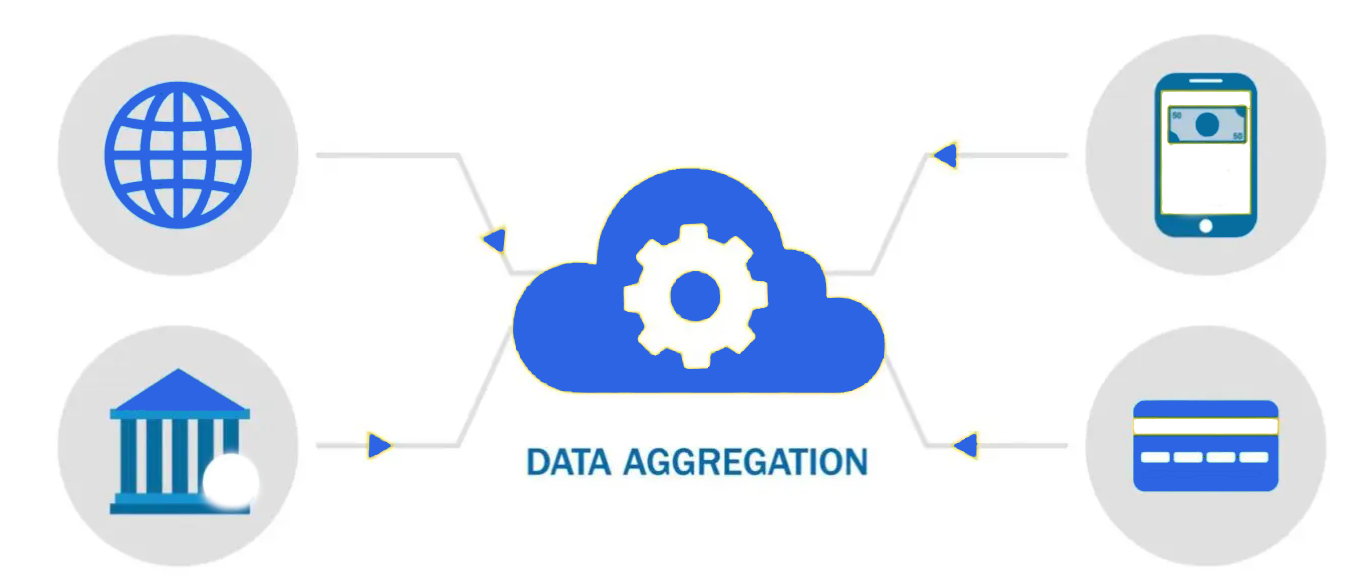Data Aggregation: Structuring and Summarising Information
 Sanjeet Singh
Sanjeet SinghData aggregation is a crucial process in data management, involving the collection, organisation, and summarization of data to provide meaningful insights. This process helps transform raw data into a structured format, making it easier to analyse and interpret. In this article, we will explore the concept of data aggregation, its importance, methods, and practical applications.

What is Data Aggregation?
Data aggregation is the process of gathering and consolidating data from multiple sources into a single location. This process involves collecting raw data, cleaning it to remove inconsistencies, and then transforming it into a more useful format. The aggregated data can then be analysed to identify trends, patterns, and anomalies.
Why is Data Aggregation Important?
Data aggregation offers several benefits:
Improved Decision Making: By consolidating data from various sources, organizations can gain a comprehensive view of their operations. This enables informed decision-making based on accurate and up-to-date information.
Enhanced Efficiency: Data aggregation streamlines data analysis by reducing the time and effort required to collect and process data from multiple sources.
Better Data Quality: By cleaning and standardising data, organisations can improve data quality and reduce the risk of errors and inconsistencies.
Increased Productivity: Automated data aggregation tools can significantly reduce manual effort, freeing up time for analysts to focus on higher-value tasks.
Key Steps in Data Aggregation
Data Identification: The first step is to identify the relevant data sources. This may include databases, spreadsheets, web APIs, or other data repositories.
Data Extraction: Once the data sources are identified, the next step is to extract the required data. This can be done using various techniques, such as SQL queries, web scraping, or API calls.
Data Cleaning and Transformation: The extracted data often needs to be cleaned and transformed to ensure consistency and accuracy. This may involve removing duplicates, handling missing values, and standardising data formats.
Data Integration: The cleaned and transformed data is then integrated into a single, unified dataset. This may involve merging multiple data sources or creating a data warehouse.
Data Aggregation: The integrated data is aggregated to summarize and condense information. This can be done using various techniques, such as:
Summarization: Calculating summary statistics like averages, medians, and standard deviations.
Grouping: Grouping data based on specific criteria, such as time period, location, or product category.
Filtering: Selecting specific subsets of data based on certain conditions.
Data Analysis and Visualization: The aggregated data can be analysed to identify trends, patterns, and insights. Data visualisation techniques, such as charts and graphs, can be used to communicate these insights effectively.
Common Data Aggregation Techniques
Roll-up: Aggregating data from a lower level to a higher level. For example, aggregating sales data from individual products to product categories.
Drill-down: Breaking down data from a higher level to a lower level. For example, drilling down from total sales to sales by region and product.
Slice and Dice: Analysing data from different perspectives by filtering and grouping data based on various dimensions.
Pivoting: Restructuring data by moving rows to columns or columns to rows.
Challenges in Data Aggregation
Data Quality: Inconsistent and inaccurate data can lead to misleading insights.
Data Integration: Integrating data from multiple sources can be complex, especially when dealing with different data formats and structures.
Data Security and Privacy: Protecting sensitive data is crucial, especially when dealing with personal or confidential information.
Conclusion
Data aggregation is a powerful tool that helps organisations make better decisions, improve efficiency, and gain a competitive edge. By following key steps and employing appropriate techniques, organizations can effectively harness data aggregation to unlock valuable insights. For individuals seeking to deepen their understanding of these concepts, pursuing a data analytics course in Delhi, Gurgaon, Pune and other Indian cities can provide essential skills and knowledge in the field. Participating in such courses significantly enhances one’s ability to manage and analyze data effectively.
Subscribe to my newsletter
Read articles from Sanjeet Singh directly inside your inbox. Subscribe to the newsletter, and don't miss out.
Written by

Sanjeet Singh
Sanjeet Singh
I am Sanjeet Singh, an IT professional with experience in the IT sector. I have a broad understanding of Data Analytics and proficiency across multiple layers of software development and testing, from the front end to the back end.